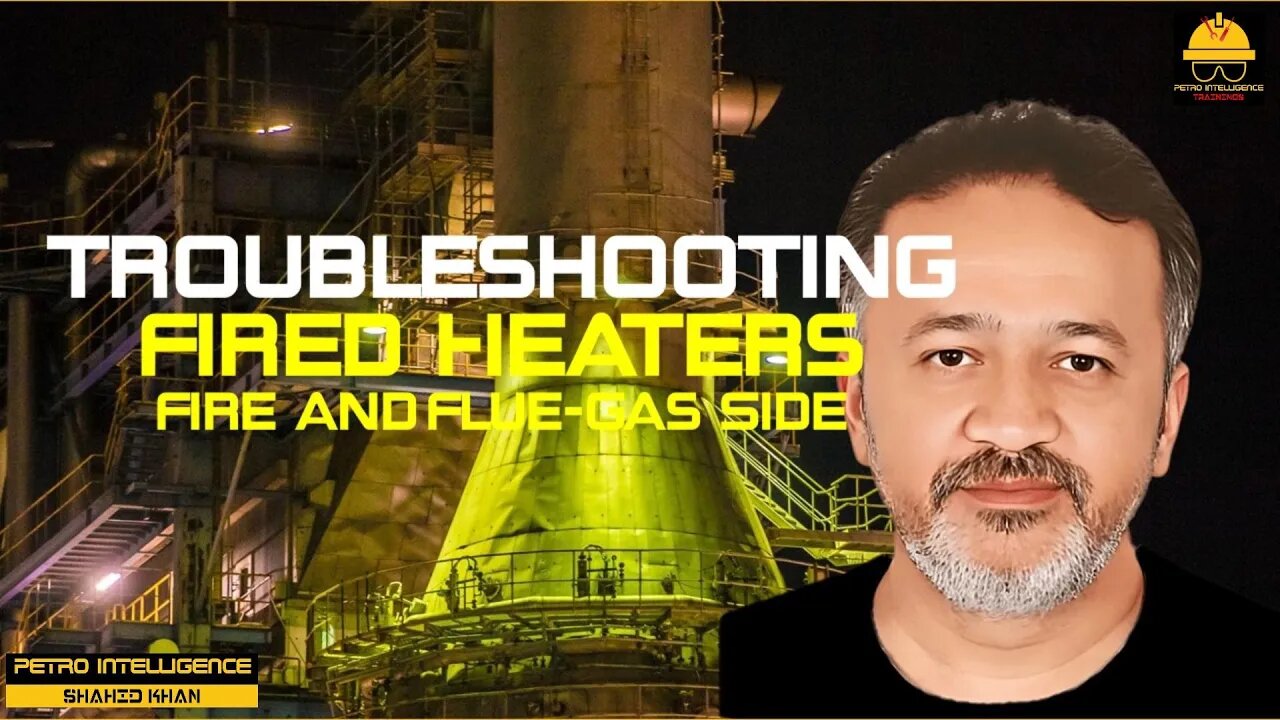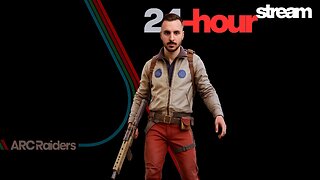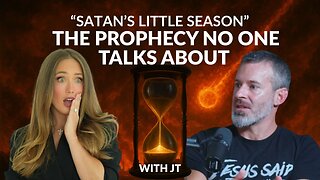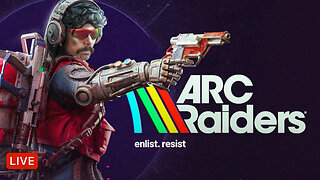Premium Only Content

Mastering Fired Heater Troubleshooting: Fire Side Essentials
Mastering Fired Heater Troubleshooting: Fire Side Essentials:
Troubleshooting fired heaters, whether from the fire side or flue gas side, is essential to maintain safe and efficient operation in various industrial processes, such as refineries and petrochemical plants. Here's a general overview of how to troubleshoot fired heaters from both sides:
1. Fire Side Troubleshooting:
a. Flame Quality:
Check for a stable and even flame. An unstable flame can lead to incomplete combustion and increased emissions.
Inspect the burners for clogging or damage.
Verify that the fuel supply is consistent and within the specified range.
b. Fuel Supply:
Ensure the fuel gas quality meets specifications, including the absence of contaminants like water or impurities.
Check fuel pressure and flow rates to ensure they are within the recommended limits.
Examine the fuel nozzles and valves for clogs or leaks.
c. Combustion Air:
Ensure an adequate supply of combustion air to support efficient combustion.
Check for obstructions in the air inlets, air dampers, or air filters.
Inspect the blower or fan responsible for air delivery for proper operation.
d. Flame Supervision:
Verify the flame detection system's functionality. Faulty flame detectors can lead to unstable combustion or unsafe conditions.
e. Soot and Deposits:
Inspect the interior of the furnace for soot, ash, or deposits that may reduce heat transfer efficiency.
Clean or remove any buildup inside the furnace to restore proper heat exchange.
2. Flue Gas Side Troubleshooting:
a. Stack Inspection:
Examine the flue gas stack for proper draft and emissions. Abnormal emissions or insufficient draft can be indicators of issues.
Check for any physical damage or blockages in the stack.
b. Heat Exchanger Tubes:
Inspect the heat exchanger tubes for fouling, corrosion, or leaks.
Clean or replace damaged tubes as needed to ensure efficient heat transfer.
c. Excess Air:
Adjust the air-to-fuel ratio to optimize combustion efficiency. Too much excess air can lead to heat loss, while too little can result in incomplete combustion.
d. Flue Gas Analysis:
Perform flue gas analysis to assess the composition of the flue gas, including CO, CO2, O2, and NOx levels.
Compare the results to design specifications and industry standards to identify potential issues.
e. Emission Controls:
Verify the functionality of emission control systems, such as selective catalytic reduction (SCR) or flue gas desulfurization (FGD) units, if present.
Ensure that emissions meet environmental regulations.
f. Insulation:
Examine the insulation on the exterior of the furnace and ductwork for signs of damage or deterioration. Proper insulation is crucial for heat conservation.
g. Safety Systems:
Ensure that safety systems, such as emergency shutdown and relief valves, are in good working condition to address any emergencies effectively.
h. Documentation and Logs:
Review operating logs and maintenance records to identify trends or recurring issues that might need attention.
Troubleshooting fired heaters is a complex process that often requires the expertise of trained personnel and may involve advanced diagnostic tools and technologies. It's important to prioritize safety and environmental compliance while conducting these troubleshooting efforts.
-
 1:04:41
1:04:41
BonginoReport
5 hours agoMichelle Obama Admits Affirmative Action Is A Scam - Nightly Scroll w/ Hayley Caronia (Ep.158)
84.1K38 -
 1:11:40
1:11:40
Kim Iversen
5 hours agoZelensky BLINDSIDED By Trump In White House Meeting | UK Bans RACIST JEWS From Attending Soccer Match
83.3K124 -
 3:10:25
3:10:25
Nerdrotic
5 hours ago $12.57 earnedRacist Academics Attack Tolkien | Hollywood to Strike AGAIN? | AI Doomsday - Friday Night Tights 376
97.7K5 -
 LIVE
LIVE
GrimmHollywood
20 hours ago🔴LIVE • GRIMM HOLLYWOOD • ARC RAIDERS •
100 watching -
 LIVE
LIVE
GritsGG
6 hours agoRanked Top 70! Most Wins in WORLD! 3734+!
41 watching -
 LIVE
LIVE
TheItalianCEO
5 hours ago24-hr Arc Raiders Stream
55 watching -
 27:49
27:49
Robbi On The Record
23 hours ago $6.85 earnedRevelation, the End Times, and Satan’s Little Season part II - ft JT
42.5K9 -
 LIVE
LIVE
Mally_Mouse
1 day agoFriend Friday!! 🎉 - Let's Play! - Goose Goose Duck
51 watching -
 LIVE
LIVE
ttvglamourx
9 hours ago $0.37 earnedHAPPY FRIDAYYYY !DISCORD
32 watching -
 9:32:02
9:32:02
Dr Disrespect
12 hours ago🔴LIVE - DR DISRESPECT - ARC RAIDERS - THE ULTRA EXTRACTION GAME
159K15